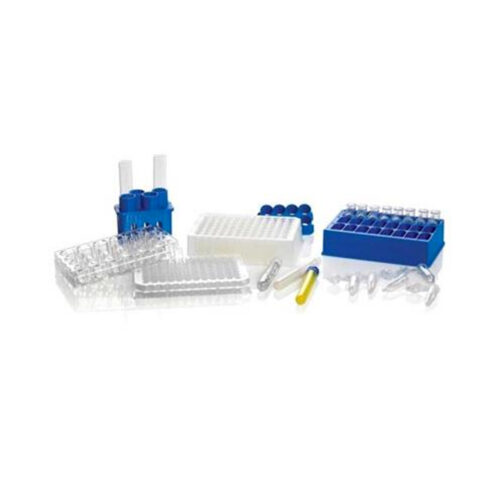Chip-DSC 10
The all new Chip-DSC 10 integrates all essential parts of DSC: furnace, sensor and electronics in a miniaturized housing. The chip-arrangement comprises the heater and temperature sensor in a chemically inert ceramic arrangement with metallic heater and temperature sensor.
This arrangement allows superior reproducibility and due to the low mass outstanding temperature control and heating rates of up to 300 K/min. The integrated sensor is easily user exchangeable and available for a low cost.
Specifications
| MODEL | CHIP-DSC 10* |
|---|---|
| Temperature range: | –180°C (with appropriate cooling option) up to +600°C |
| Price range: | $$ |
| Heating and cooling rates: | 0,001 up to 300 K/min |
| Temperature accuracy: | +/- 0,2K |
| Temperature precision: | +/- 0,02K |
| Digital resolution: | 16.8 million points |
| Resolution: | 0,03 µW |
| Atmospheres: | inert, oxidizing (static, dynamic) |
| Measuring range: | +/-2,5 up to +/-1000 mW |
| Calibration materials: | included |
| Calibration: | recommended 6 month interval |
*Specs depend on configurations
Quench cooling system (-180 – 600°C)
The Quench cooling accessories provide and open cooling container surrounding sensor an sample. Coolant dependent, i.e. dry ice or LN2, sample temperature can go down to -180 °C. This systems does not allow defined gas atmospheres while measuring, as outgasing will surround the sample.
Software
The all new Platinum Software greatly enhances your workflow as the intuitive data handling only requires minimum parameter input.
AutoEval offers a valuable guidance for the user when evaluating standard processes such as glass transitions or melting points. Thermal library product identification tool, provides a database with 600 polymers permitting an automatic identification tool for your tested polymer. Instrument control and/or surveillance through mobile devices gives you control wherever you are.

- Software packages are compatible with latest Windows operating system
- Set up menu entries
- All specific measuring parameters (User, Lab, Sample, Company, etc.)
- Optional password and user levels
- Undo and Redo function for all steps
- Infinite heating, cooling or dwell time segments
- Multiple language versions such as English, Germany, French, Spanish, Chinese, Japanese, Russian, etc. (user selectable)
- Evaluation software features a number of functions enabling a complete evaluation of all types of data
- Multiple smoothing models
- Complete evaluation history (all steps can be undone)
- Evaluation and data acquisition can be performed simultaneously
- Data can be corrected using zero and calibration correction
- Data evaluation includes: Peak separation software Signal correction and smoothing, first and second derivative, curve arithmetic, data peak evaluation, glass point evaluation, slope correction. Zoom / individual segment display, multiple curve overlay, annotation and drawing tools, copy to clip board function, multiple export features for graphic and data export, reference based correction
Applications
Application: Rapid cooling rates without active cooling
The LINSEIS Chip-DSC allows fastest possible ballistic cooling rates without any active cooler needed. Due to the low thermal mass and innovative sensor design, cooling rates up to 500 K/min from 400°C on can be reached. Even cooling to 100°C can be done with cooling rates of up to 90 K/min. A cooling from 400°C down to 30°C can be done in 4 minutes just by ballistic colling without need of any additional cooling devices.
Of course, the signal can still be evaluated during that cooling segment and does not lose sensitivity or accuracy.
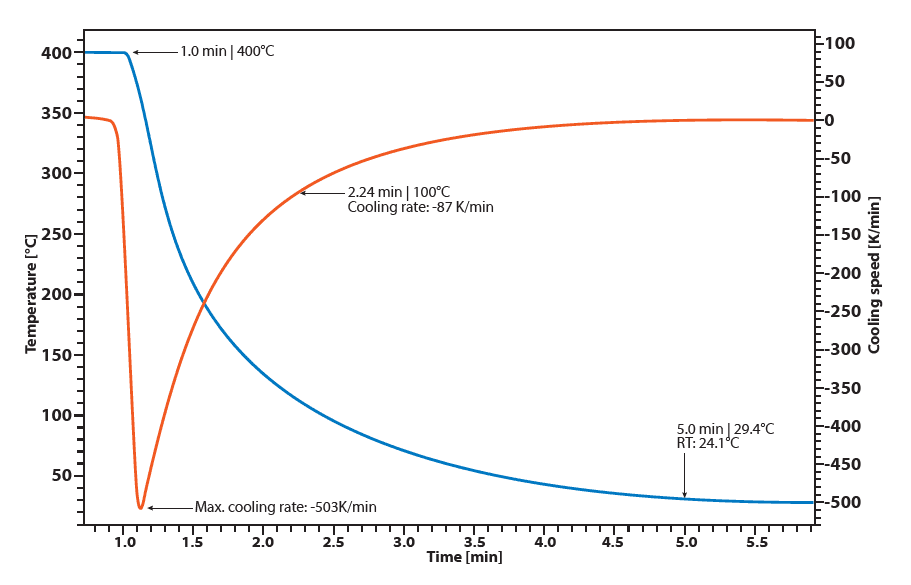
Application: Measurement of PET granulate
The analysis of polymers is one of the main applications of DSC. Effects like glass transitions, melting and crystallization points are of interest and often very hard to detect. The new LINSEIS Chip-DSC provides high resolution and sensitivity, making it an ideal instrument for this kind of analysis. As an example, a PET granulate was heated, quench cooled to freeze the amorphous state and afterwards analyzed by Chip-DSC with a linear heating rate of 50 K/min. The curve shows a significant glass transition around 80°C, followed by a cold crystallization of the amorphous parts starting around 148°C and a melting peak at 230°C.
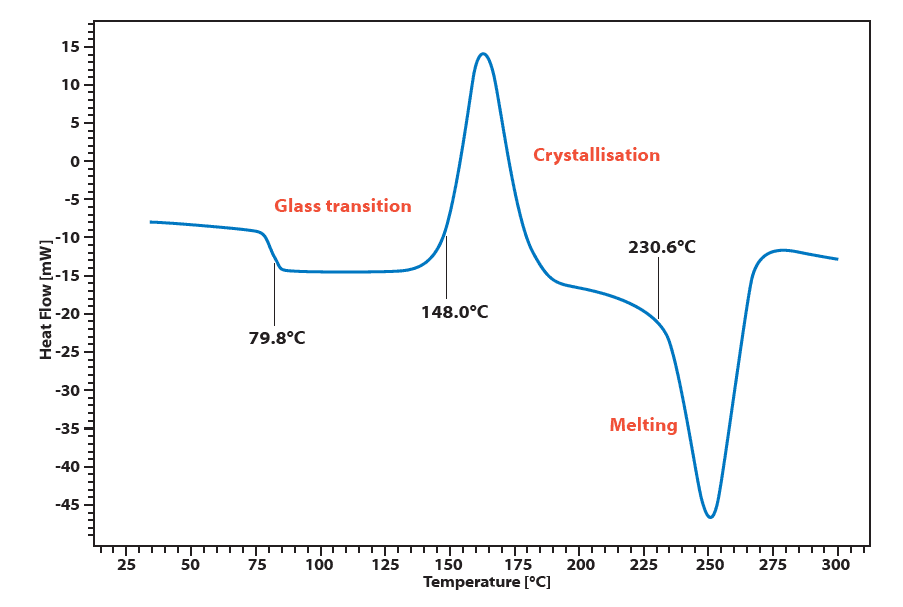
Application 2
Application: Highly energetic materials
Highly energetic materials are used in airbags, as propellants, blasting materials etc. For any type of DSC instrument, there is a risk of damaging the sensor and even the furnace. In the Chip-DSC, the chip (integrating sensor and furnace) can be easily replaced by the operator at low cost and in a short time. In case of a damage to the instrument, the downtime of the instrument is reduced drastically. Change oft he sensor needs only some seconds and the calibration can be done in less than half an hour. The example shows the DSC diagram of 2,8 mg of airbag igniter.
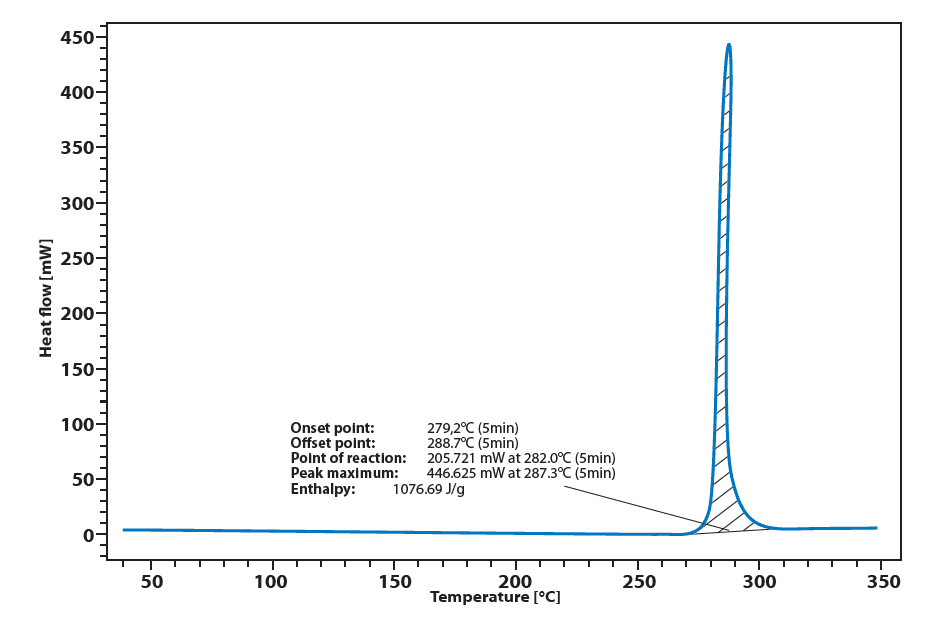
Application: Rapid heating rates
Extremely high heating rates up to 1000K/min can be achieved while the reproducibility of the melting enthalpy remains excellent. The example shows the melting point of Indium measured with different heating rates (5 K/min; 50 K/min; 100K/min; 200K/min; 300 K/min and 500K/min). This means that a complete analysis including heating and cooling can be done in only 10 minutes without any need for optional cooling devices.

Videos
Downloads
Gerelateerde producten
-
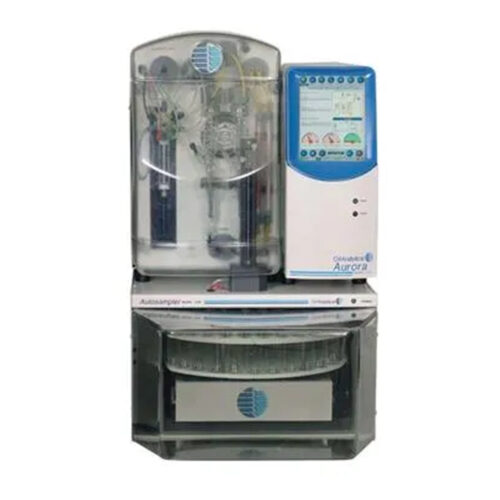
Aurora 1030D
TOC Analyzer -

Discrete analysis
600 tests per hour -

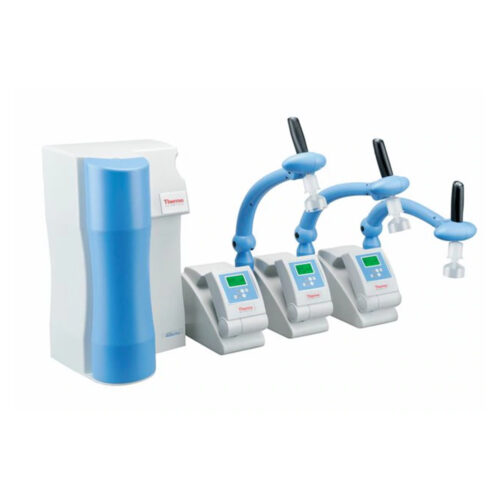
Ultrapure Water Purification
delivering ultrapure 18.2 MΩ cm water


